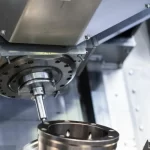Energy-saving design principle and practice of bearings
Introduction
In today’s era, where energy conservation and environmental protection have become global concerns, the design and practice of energy-saving bearings are of paramount importance. Bearings are critical components in various industries, including automotive, aerospace, and machinery. By implementing energy-saving design principles and adopting efficient practices, significant reductions in energy consumption can be achieved without compromising performance or reliability.
Design Principles
The following design principles are crucial for developing energy-efficient bearings:
1. Friction reduction: Minimizing frictional losses is key to enhancing energy efficiency. This can be achieved through improved surface finishes, optimized lubrication systems, and the use of low-friction materials.
2. Weight reduction: Reducing the weight of bearings enhances their efficiency by reducing inertia and friction. The use of lightweight materials, such as high-performance polymers or advanced composites, can contribute to lower energy consumption.
3. Aerodynamics optimization: Bearings operating at high speeds often encounter air resistance, which leads to energy losses. By designing bearing components with aerodynamic profiles and minimizing fluid drag, energy consumption can be significantly reduced.
Practices for Energy Saving
Implementing the following practices in bearing applications can further enhance energy efficiency:
1. Proper lubrication: Adequate lubrication reduces friction and wear, thereby improving energy efficiency. Using high-quality lubricants and maintaining proper lubricant levels and viscosity are essential for energy-saving bearing operation.
2. Bearing preload optimization: Preload is applied to eliminate clearance in bearings, ensuring smooth and controlled operation. However, excessive preload can lead to energy losses. By optimizing preload levels based on the application requirements, energy consumption can be minimized.
3. Bearing sealing: Effective sealing prevents contaminants from entering the bearing, reducing friction and optimizing energy consumption. Advanced sealing technologies, such as labyrinth seals or magnetic seals, can significantly enhance energy-saving capabilities.
4. Thermal management: Efficient heat dissipation is critical for energy-saving bearings. Designing and implementing effective cooling systems can prevent excessive temperature rise, which can contribute to increased energy consumption and reduced bearing life.
Conclusion
The design and practice of energy-saving bearings play a vital role in achieving sustainable and efficient operations across industries. By adhering to the principles of friction reduction, weight reduction, and aerodynamics optimization, combined with practices such as proper lubrication, preload optimization, sealing, and thermal management, substantial energy savings can be achieved. Embracing energy-saving technologies and adopting best practices not only contributes to environmental conservation but also leads to improved performance and reduced operating costs.
.webp)





